100th Anniversary Great Nave Tour at the Cathedral of St. John the Divine
Celebrate the 1925 construction of the stunning nave inside the world's largest Gothic cathedral!


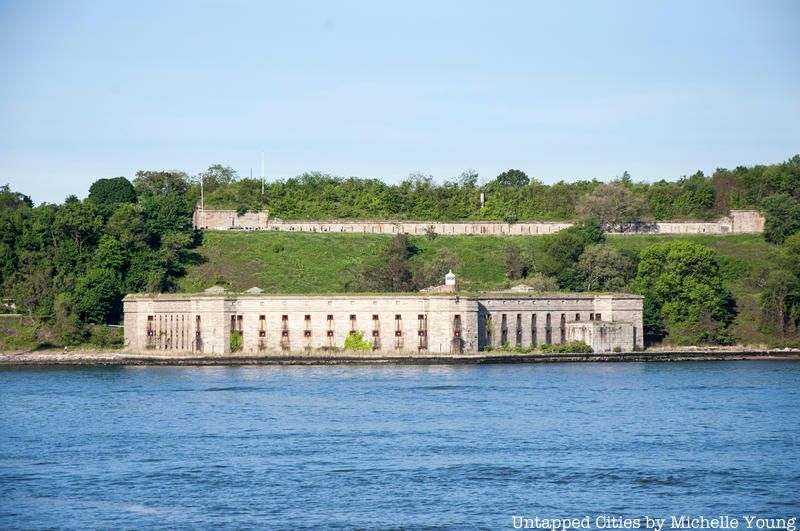
If you’re looking for places to explore in New York City that offer beautiful scenery and even a history lesson, consider visiting some sites in the Gateway National Recreation Area. Taking up more than 26,000 acres of land, the area is located mostly along the outer coastlines of Queens, Brooklyn, Staten Island, and northern New Jersey. It was established by the federal government in 1972 to provide city residents with the opportunity to engage in recreational activities that they otherwise wouldn’t be able to do in the city. In 2020, over 8.4 million people visited the Gateway National Recreation Area. Although beach-goers made up a large percentage of that number, others found exploring old military sites and nature preserves to be just as exciting as a day under the sun.
Much of the shoreline opening up from the mouth of New York Harbor was utilized by the U.S. Navy and Army as batteries or bunkers to protect New York from naval attacks. Although many of the installations saw little to no action during their time, the structures were preserved by the federal government for historical and educational purposes after 1974. These military sites, now overgrown, were constructed on coastal dunes and maritime forests that now serve as important nesting locations for migratory birds. A wide array of secluded beaches and thick vegetation make for a great getaway from the sometimes gray and congestive urban environment.
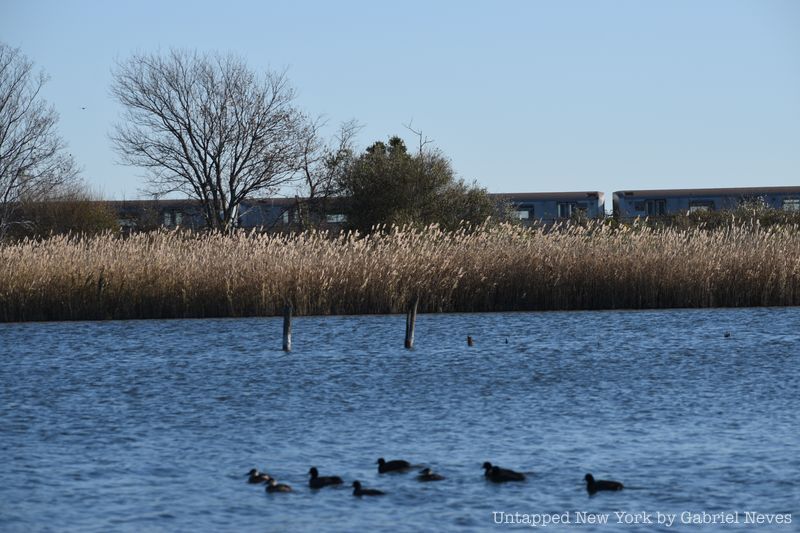
It can be argued that this location is the most important nature preserve in the Gateway National Recreation Area. Resting on some of the marshy islands located between mainland Queens and the Rockaway peninsula, the Jamaica Bay Wildlife Refuge is a great destination for nature lovers. The refuge is split into two sections by the traversing Cross Bay Boulevard, with both sides featuring freshwater ponds, hiking trails, and informational signage. The west side is the more “visitor-friendly” of the two with more lookout points, an information center, picnic tables, and a parking lot.
Since its opening in 1972, the wildlife refuge has been home to a number of protected species of flora and fauna, specifically migratory birds. The area is also an important mating and egg-laying site for diamondback terrapins and horseshoe crabs due to how naturally sheltered the refuge is. The land was used in the early 1940s as a hydraulic fill for the nearby JFK Airport until it became apparent how harmful that was to the ecosystem in Jamaica Bay.
Recognizing the abundance of wildlife present and the impact of the pollutants on the environment, the federal government took action to ensure that the land would be kept clean and well-maintained to protect the natural beauty of the salt marshes. Of all the land managed by the National Park Service (NPS), the Jamaica Bay Wildlife Refuge is considered the only territory specifically labeled as a “wildlife refuge”.
Many photographers, scientists, and bird-watchers visit to take in the scenery and admire the species that live there. There are plenty of spots along the trails where you can see the city skyline in the distance, which offers a reminder of just how vast New York really is.
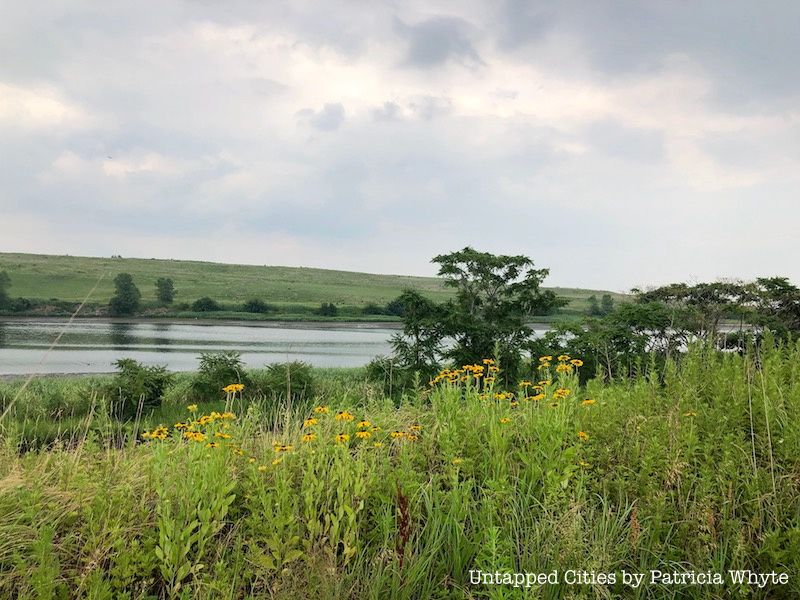
Completed in 2019, this former landfill offers some of the best views of New York City in the Gateway National Recreation Area. The park is named after the Brooklyn-born Shirley Chisholm who became the first black woman to occupy a seat in Congress. The Pennsylvania and Fountain Avenue landfills on which the state park sits were at some point receiving around 8,000 tons of trash each day.
Since the late 1960s and early 1970s, the city’s Departments of Sanitation and Environmental Protection cooperated on the site’s renovation to prepare for future construction. In the process, the entire 407-acre plot was covered with soil, in which thousands of trees and shrubs were to be planted to cultivate a new ecosystem in South Brooklyn.
If you’re interested in taking a trip out to Shirley Chisholm State Park, biking the trails is a great option. The hills in the park rise to about 130 feet above sea level. There is plenty of picnic space, canoe/kayak portage sites, and a variety of wildlife.
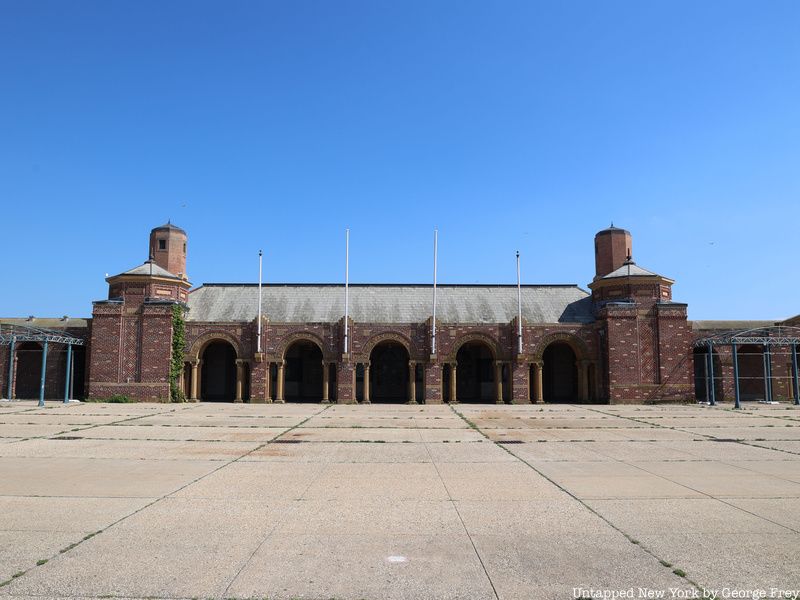
When most people think of the Rockaways, the first thing that comes to mind is the beach. Jacob Riis Park is one of the most historic seaside recreation facilities in the entire Gateway National Recreation Area. The park was named in honor of the journalist Jacob Riis in 1914 and was originally used as a military base extension from Fort Tilden up until the late 1920s. A runway on the base was actually the takeoff site for the first-ever transatlantic flight in 1919.
After the initial construction of bathing facilities began in the early 1930s, Robert Moses was hired to oversee the project as commissioner of the Department of Parks and Recreation. He proposed the creation of a causeway, an Art Deco style bathhouse, parking lot, golf course, playing fields, and a boardwalk for the park. Moses designed the facilities in the Beaux-Arts style, intending to amplify the grandeur and magnitude of one of his many public works projects.
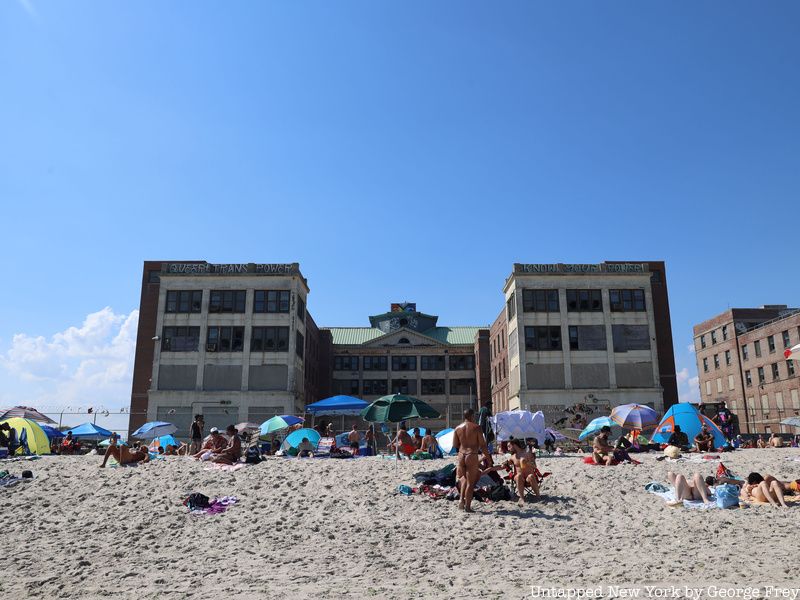
Jacob Riis Park also has a certain appeal to urban explorers due to the abandoned Neponsit Beach Hospital. The land surrounding the former tuberculosis sanatorium was integrated into the park in 1956 after a compromise was reached between city officials and Robert Moses. Most of the rooms are decently preserved and the facility itself is pretty large, with two separate buildings and five floors in each. It’s been a little over three decades since its closure as a nursing home, so a lot of the old equipment (coffee machines, catalogs, powered bathtubs, bathrooms, etc) is still there. Much like many of the other popular abandoned locations covered by Untapped NYC, it’s a great place to photograph or to just explore with friends.
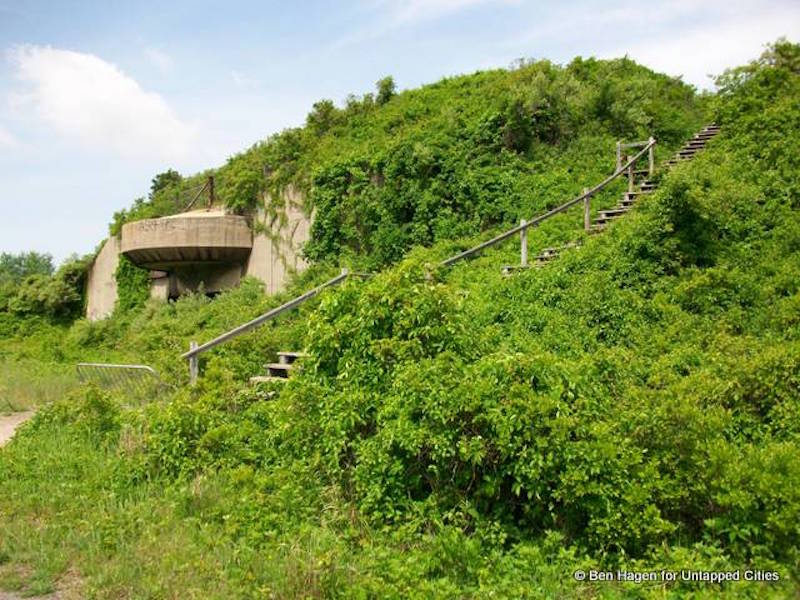
This fort is one of the many coastal defense structures found in the Gateway National Recreation Area. Fort Tilden was initially named “Camp Rockaway Beach” when it first went into service in 1917. The installation was decommissioned by the U.S. Army in 1995, and throughout its time it served as an army reserve post and even as a Nike Ajax missile launch site during the Cold War.
What you’ll now find is that a lot of the old batteries and storage spaces for the equipment and ammunition have been completely overgrown by the brush of the maritime forest. The land has become important to the NPS in their efforts to protect the nesting grounds of the threatened Piping Plover. Signs and taped areas are marked out along the beach to discourage visitors from walking over nests and destroying the birds’ eggs. The same measures are taken to protect the species of Common tern and least tern that nest in Fort Tilden, which are also threatened in New York State.
A lot of the structures are now covered in graffiti and are of course vacant, but the tops of a few of the batteries have great lookout points. Battery Kessler and Battery East offer a fantastic view of the entire Rockaway peninsula, the Atlantic Ocean, Coney Island, Staten Island, and Manhattan in the distance. To think that these installations once housed tanks, anti-aircraft guns, and even nuclear missiles gives this location every bit of intrigue.
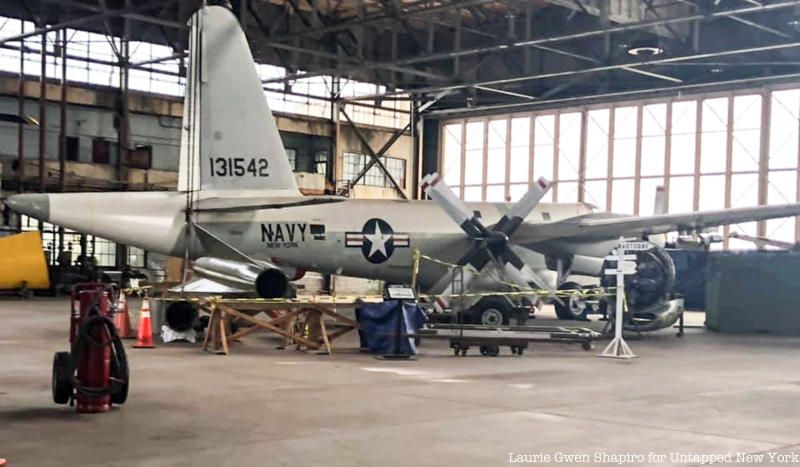
If you’re a fan of aviation history, this former airfield in South Brooklyn would be a great site to visit in the Gateway National Recreation Area. Completed in the 1930s, the park was named after the aviator Floyd Bennett, who became the first pilot to fly directly over the North Pole. Although the airfield was initially built to handle commercial flights, its most important uses were during World War II and in the years following the Cold War when it served as an army reserve. The hangars and aircraft at Floyd Bennett take visitors back in time to the mid-20th century.
In one of the most productive periods of aviation in the 1930s, the airfield played a significant role in the overall development of the industry. It hosted a number of record-breaking flights, including some transcontinental speed records and some of the very first transatlantic flights of the era. It was convenient for most pilots and airline companies because of its location near the Atlantic and its lack of geographic obstacles.
Floyd Bennett Field has hiking trails, kayak portage spots, restored airplanes, an archery range, an “Ecology Village,” a racetrack for remote-controlled cars, and the only specifically designated camping ground in all of New York City. Plenty of people also come out to the field to fly their RC planes along the runways, which are also open to the public for cycling and hiking. There are also abandoned sections to explore.
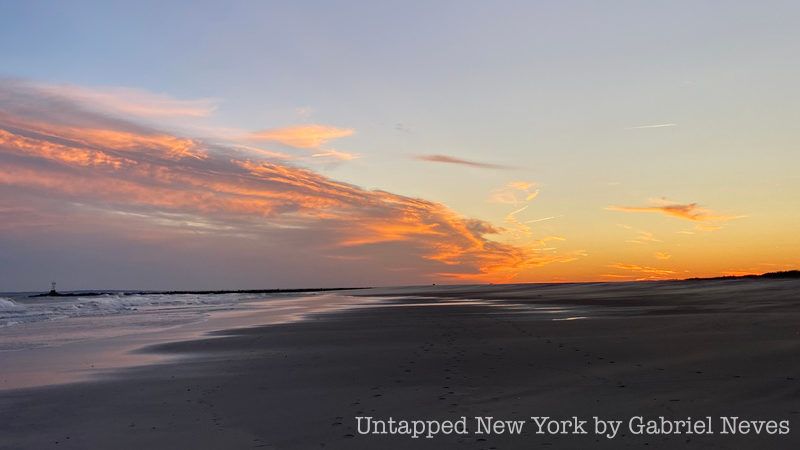
The community of Breezy Point is a private residential area on the western end of the Rockaway peninsula that usually fills up with residents in the summertime. The neighborhood is owned and maintained by its residents, a majority of which are of Irish-American descent. Although a higher number of Italian and Jewish families have moved in since the 1990s, the community has maintained its nickname as the “Irish Riviera.” During a tough economic period in the 1970s, nearby residents saw Breezy Point as more of a dump than any kind of beach getaway. Apartment complex developments that had popped up were vacated while the beach was littered with trash and abandoned vehicles.
Breezy Point Tip further past the residential area is the official part of the Gateway National Recreation Area. Much like the adjacent Fort Tilden, it has one of the most diverse breeding spots for shorebirds in all of New York City. Threatened species such as the piping plover, least tern, and common tern nest here, as well as the federally protected black skimmer and American oystercatcher. Construction and housing developments are extremely limited in Breezy Point due to the importance of bird populations to the ecosystems in Jamaica Bay and the Rockaways,
Getting to the very end of the Rockaway peninsula requires a bit of work, but it’s without a doubt worth the effort. Though not easily accessible by public transportation, the tip of the peninsula beyond the neighborhood can be reached by walking just a few miles along the beach. Once you make it to the jetty at the far end of the beach, you’ll find a spectacular view and a great spot to watch the sunset. From Breezy Point Tip, you can see Staten Island, Monmouth County in New Jersey, Coney Island, and the Manhattan skyline further in the distance.
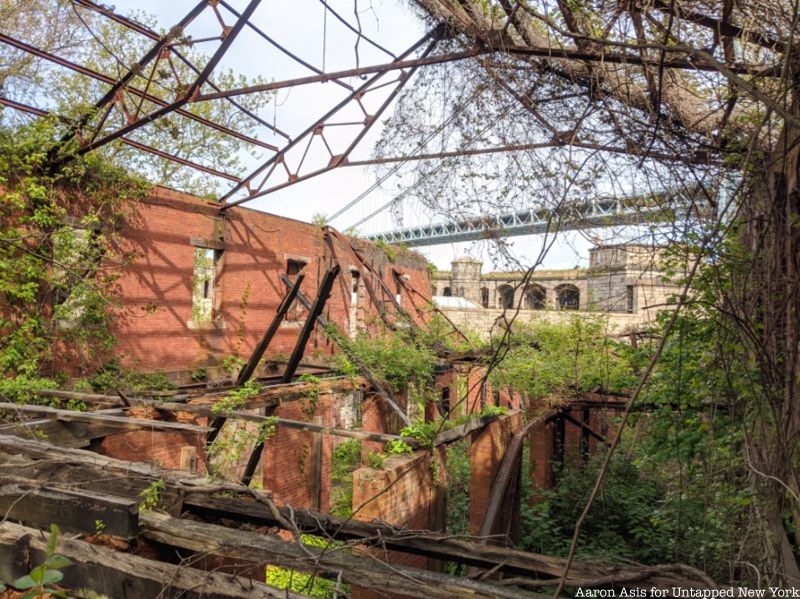
After being transferred over to the NPS from the US Navy in 1995, Fort Wadsworth held out for about three centuries as one of the longest-serving military installations in the United States. Records suggest that the first uses of the land for military purposes were in the mid-1600s, around when New York was first settled by the Dutch. It was properly used as a fortress for the first time during the American Revolution, continuously being garrisoned and maintained through each passing decade.
Located in Staten Island just under the Verrazano-Narrows Bridge, the fort majestically overlooks the entrance to New York Harbor. The United States Coast Guard and Army Reserve have headquarters in Fort Wadsworth, so the property itself is well maintained and preserved. As you walk along the paved roads, you’ll find plenty of signage along the way with historical facts about each structure on the property. The NPS offers ranger-led tours of the fort for visitors who want to go into more detail about each and every structure.
Next, read about 20 abandoned places in NYC: asylums, hospitals, power plants, islands, forts!
Subscribe to our newsletter